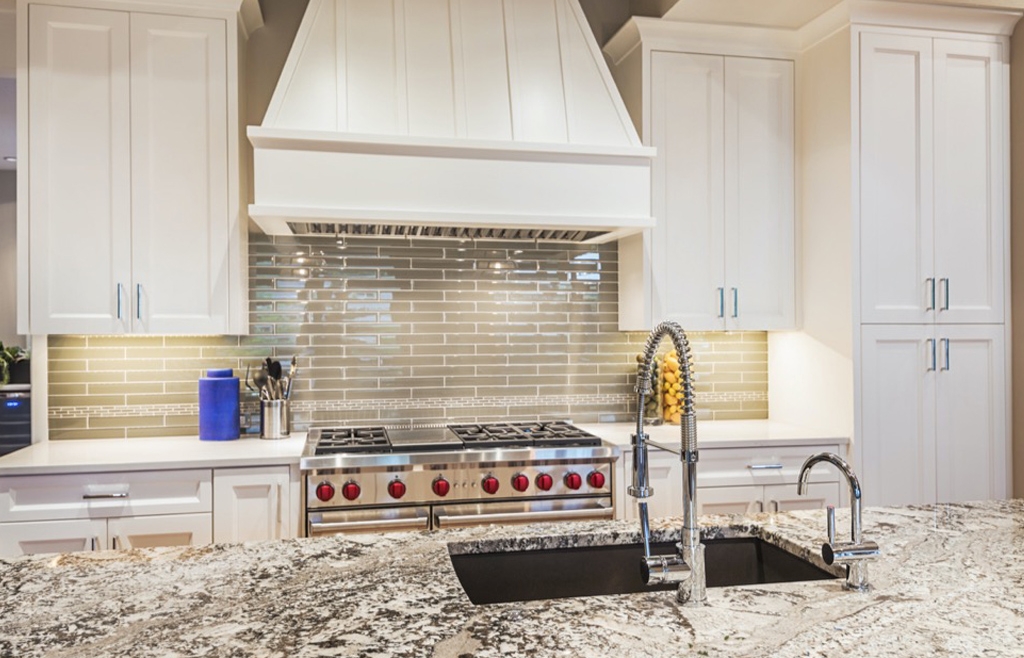Do you Need a Range Hood?
Technically, range hoods aren’t absolutely required for all kitchens and aren’t usually mandated by building code (though hoods that are installed are sometimes subject to certain rules).
In fact, I have designed projects that did not include a hood. For example, in this condo kitchen, adding a range with ventilation would have exceeded the budget and eaten into the tight space.
If you think you’d like to skip the hood, check your local building code. Review how well your space is naturally ventilated and consider your realistic cooking behaviors. After all, some people use the microwave for most meals.
Do you want a Range Hood?
If you don’t cook often with a lot of steam and oil, you can get by without a range hood, but you may actually need one more than you think.
Even if you can’t see dramatic smoke or steam when you’re cooking (from a burning roast or steamy soup), oil particles often get dispersed through the air, which is a nice way of saying that the grease from your frying pan can coat the room slowly over time if you aren’t suctioning the air away. For serious chefs who cook on the range often, a powerful hood is strongly recommended
Where Should Your Range Hood Go?
Naturally, a range hood should be placed directly over or behind a range to be effective, since the farther it is from the source, the less suction power it will deliver where you need it. However, it’s also important to consider that range hoods must ventilate to somewhere, so it’s usually recommended to place them on or near an exterior wall. The less distance the air has to travel to get outside, the less powerful the system has to be to be effective. To save energy and equipment costs, you should consider locating your range with this in mind
Different types of Range Hoods
Standard over-range hoods. There are two standard forms of over-range hoods: wall-mounted units with no surrounding cabinetry, seen in the previous photo, or undercabinet hoods that are partially enclosed in cabinetry or attached below a cupboard, as shown here. These typically vent back through the wall, though they may run all the way up, venting through the ceiling and roof.
Built-in over-range hoods. Built-in over-range hoods are disguised in cabinetry (usually faux cabinetry with no actual storage space inside), so as to be invisible or at least not a focal point. These units typically aren’t finished themselves and must be paneled, or covered with cabinetry fronts, to hide their messy inner workings. This means that you can’t really uncover one later, though you can change the paneling if you change your kitchen style
Pop-up vents. Also known as “behind cooktop hoods” or “downdraft vents,” this high-tech option isn’t really a hood at all, but rather a slim vent that applies suction right at the source of the smoke or steam, and pulls it down into ductwork in the floor rather than up into the ceiling. These vents are generally able to pop up into place when needed and tuck back down to be flush with the counter when not in use.
Microwave combo hoods. Finally, range hoods are often combined with a microwave to handle two functions at once in a small space, which can be a smart choice for compact kitchens. These combination units don’t usually have as much power as a stand-alone hood, but they can be sufficient for typical home cooking or those who rely on the microwave heavily.
*Crayton Rd. Naples

